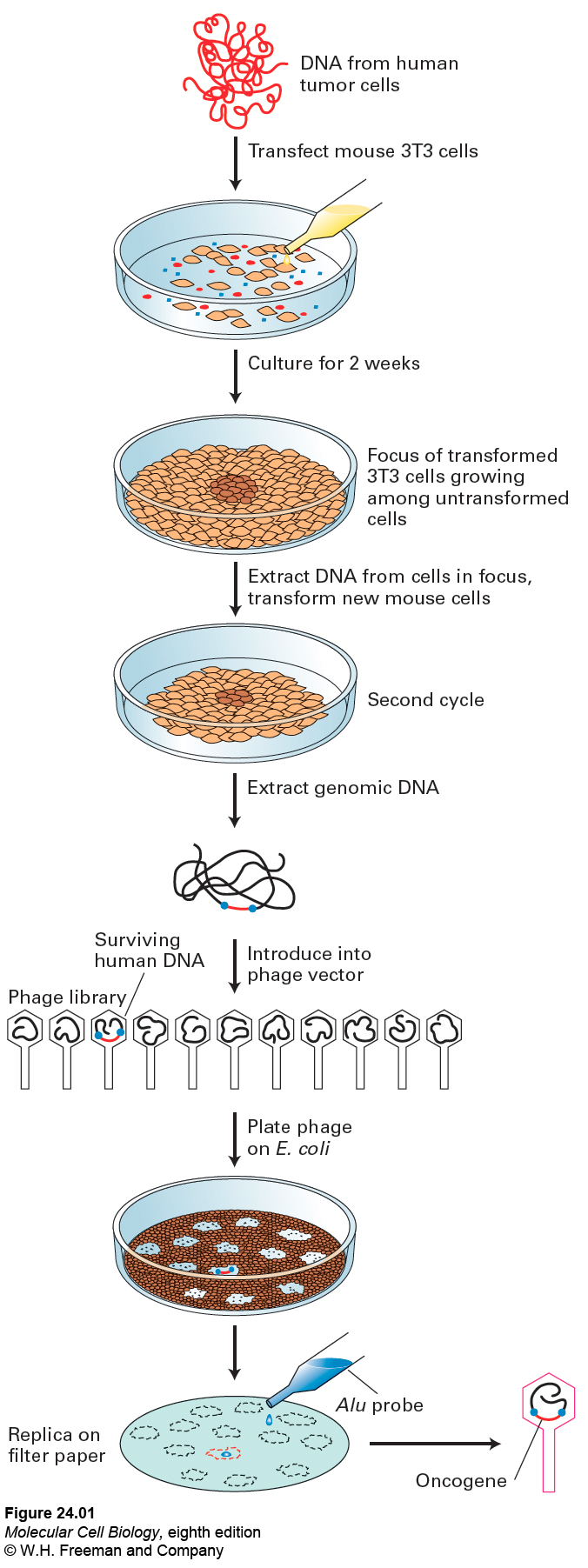
FIGURE 1 Transformation of mouse cells with DNA from a human cancer cell led to the identification and cloning of the RASD oncogene. Addition of DNA from a human bladder cancer to a culture of mouse 3T3 cells caused about one cell in a million to divide abnormally and form a focus, or clone, of transformed cells. To clone the oncogene responsible for the transformation, advantage was taken of the fact that most human genes are located close to repetitive DNA sequences called Alu sequences. DNA from the initial focus of transformed mouse cells was isolated, and the oncogene was separated from adventitious human DNA (human DNA that had no effect on cell transformation but just happened to end up in a cell that also contained the active oncogene) by secondary transfer to mouse cells. The total DNA from a secondarily transfected mouse cell was then cloned into bacteriophage l; only the phage that received human DNA hybridized with an Alu probe. The hybridizing phage should also contain part of or all the transforming oncogene, which was indeed the case.